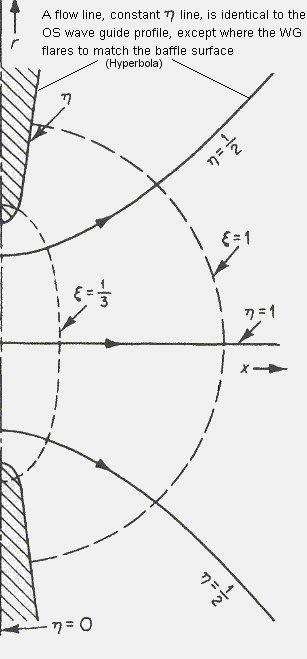| Waveguides verses Horns [message #53315] |
Thu, 19 March 2009 11:31  |
 BtHarris
BtHarris
Messages: 7
Registered: May 2009
|
Esquire |
|
|
What are the differences between waveguides and horns? If the goals are constant directivity and smoothness of response, why not go with one of the new waveguides out there?
|
|
|
|
| Waveguides ARE Horns [message #53317 is a reply to message #53315] |
Thu, 19 March 2009 13:24  |
 |
 Wayne Parham
Wayne Parham
Messages: 18680
Registered: January 2001
|
Illuminati (33rd Degree) |
|
|
The term "waveguide" has been applied to horns that provide constant directivity using a flare that doesn't require diffraction for waveshaping. They're a specialized subset. An acoustic waveguide is a horn, but a horn is not necessarily a waveguide.
Historically, waveguides were transmission lines used in RF at very high (microwave) frequencies. They weren't used as transmitters or receivers - those were antenna. Waveguides were ducts.
In the last decade, the term "waveguide" was adopted in audio. It is not a transmission line in this case, it is a specialized kind of horn, one that provides constant directivity.
Some CD horns or "waveguides" provide an axisymmetrical coverage pattern, others an asymmetrcial pattern like 90°x40°. It is much easier to make a round or square (axisymmetrical) CD horn, but I believe asymmetrical horns are much more useful for two important reasons. First, when sound sources are stacked vertically on a baffle, like a woofer and tweeter, they interact with one another and form nulls above and below the forward axis. It is preferable to limit sound outside these nulls, ideally, no sound would be radiated outside them. Second, boundary reflections are undesirable and probably the most offensive reflection is ceiling slap. It is useful to have fairly wide horizontal pattern for room coverage but limited vertical radiation pattern to reduce floor and ceiling reflections.
Conical horns are the simplest horns to make, and they provide constant directivity. But when used with compression drivers, they can be improved by smoothly radiusing the throat, "nudging" the wavefront from planar into a spherical wavefront. This forms what some have begun to call a waveguide. The radiused throat is the distinguishing feature than makes them different than other horns that use diffraction to provide constant directivity.
Most early constant directivity horns used diffraction at the throat to "fracture" the plane wave into a spherical wavefront. This had the effect of widening the radiation angle at the throat, so the flare itself constrained the diffracted wavefront and limited it to the desired radiating angle.
In addition to the diffraction used in the throat, sometimes an extra diffration edge was placed about 1/3 from the mouth. The slot in the throat widens the pattern up to relatively high frequencies, and the one closer to the mouth was for lower frequencies. The problem is these diffraction features cause discontinuities which create ripples in impedance and response. They also create a secondary virtual source, which makes the horns appear to have a different acoustic center off axis.
Newer horns use a mimimum surface curve, radiused to transition from the throat exit angle to the horn's wall angle. This gentle transition "nudges" the plane wavefront into a curved wavefront as it progresses down the horn. You can see this illustrated in the drawing below:

Examine the H290 horn and the π wood horn. They both provide constant directivity yet have a smoothly radiused transition from throat entrance angle to the asymptote wall exit angle at the mouth. There is no diffraction slot or edge anywhere. The mouth of the H290 terminates at an edge, but the relatively high crossover makes this edge less significant. The π wood horn has a larger mouth and rounded mouth termination to reduce its effect even more. The pattern is uniform over a 90°x40° coverage angle and response is smooth. By all standards, these are attractive features and their performance is quantified by measurements.
|
|
|
|







